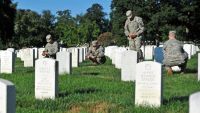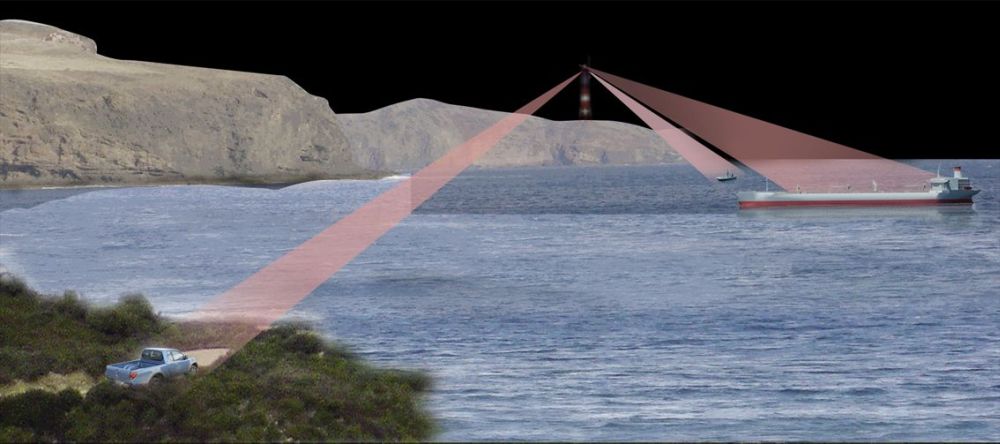WASHINGTON, Aug. 31, 2011 — Since early June, about 100 soldiers and volunteer students have spent their nights silently walking between the seemingly endless rows of marble at Arlington National Cemetery here, stopping to crouch and clear the grass from the base of each headstone.
Then they step back, crouch again and snap photos with smartphones of the front and back of each headstone — 219,619 of them including the 726 new burials since the project began. They’ve also photographed 43,096 columbarium wall niches where urns filled with cremated remains rest. Next they enter the section and grave numbers, the GPS latitude and longitude, how many are interred under one grave and other information. Once they double-check the information, they email it in a package to a task force of specialists who begin the process of matching headstone information with digitized records that are then compared for accuracy.
The photo documentation is just the first step in the cemetery’s efforts to correct issues on grave identification, said cemetery officials. The problems had come to light more than a year ago when it was discovered that the cemetery was operating on an antiquated accountability system that often meant interred remains were not where they were supposed to be.
As the soldiers have been capturing images of the headstones, the cemetery also is digitally mapping the cemetery through aerial photography, which will add an additional layer of accountability and eventually will provide the added benefit of enabling the public to locate and view the gravesites of loved ones over the Internet.
Much of the documentation work on the ground has been accomplished by Company D soldiers of the 3rd U.S. Infantry, known as “The Old Guard,” between 10 p.m. and 6 a.m.
Army Capt. Nate Peterson, Company D commander, said the reasons for working late night into early morning were partly to avoid the 100-degree-plus temperatures and humidity and because his soldiers could more aptly control the lighting in the evening. He noted his team was off the grounds by the time the first funeral was under way. An average of 27 funerals takes place at the cemetery daily.
On this day, the soldiers were at the start of 15,000 reshoots. Sometimes the angle of the original photo submitted was key-stoned or blurry, or the marble was too reflective of the flash or the email didn’t make it to the data collection center. Bottom line — if the photos aren’t perfect, they’re photographed again, Peterson said, adding that his team would get creative if just for the perfect angle.
“President Taft’s marker is really tall and they wanted to make sure they got a nice head-on shot, so one of the guys put another guy on his shoulders, backed up and took the picture,” he said.
Army Spc. Matthew Caruso, who has been with the Old Guard for about two years, said taking the photos has been an honor.
“It’s a good feeling knowing that you’re doing something for the families of the fallen and making sure in this particular case that we’re helping to fix any discrepancies in the cemetery,” he said.
Caruso just recently found out from his grandmother that his grandfather was in the columbarium.
“It was personally interesting to me because I have a fallen grandfather there that I never heard about until recently,” Caruso said. “My grandmother told me he was buried here, a World War II veteran, so I did some research and found out where he was.”
Yesterday, soldiers were working in section 33, one of the oldest areas that contain the graves of service members who lived from the late 1800s into the early 1900s. Most were veterans of the Spanish-American War.
For Army Pfc. Chris Bodell, working through the dark nights has given him pause to think about the people reflected by the headstones.
“It’s kind of a weird feeling looking at all of those who have come before me, wondering what they did in their careers,” he said. “Looking at the graves, taking pictures to help document the people who fought in the Civil War and those who have died in the current conflicts — this is all so much bigger than just myself.”
Source:
U.S. Department of Defense
Office of the Assistant Secretary of Defense (Public Affairs)

 von
von 
